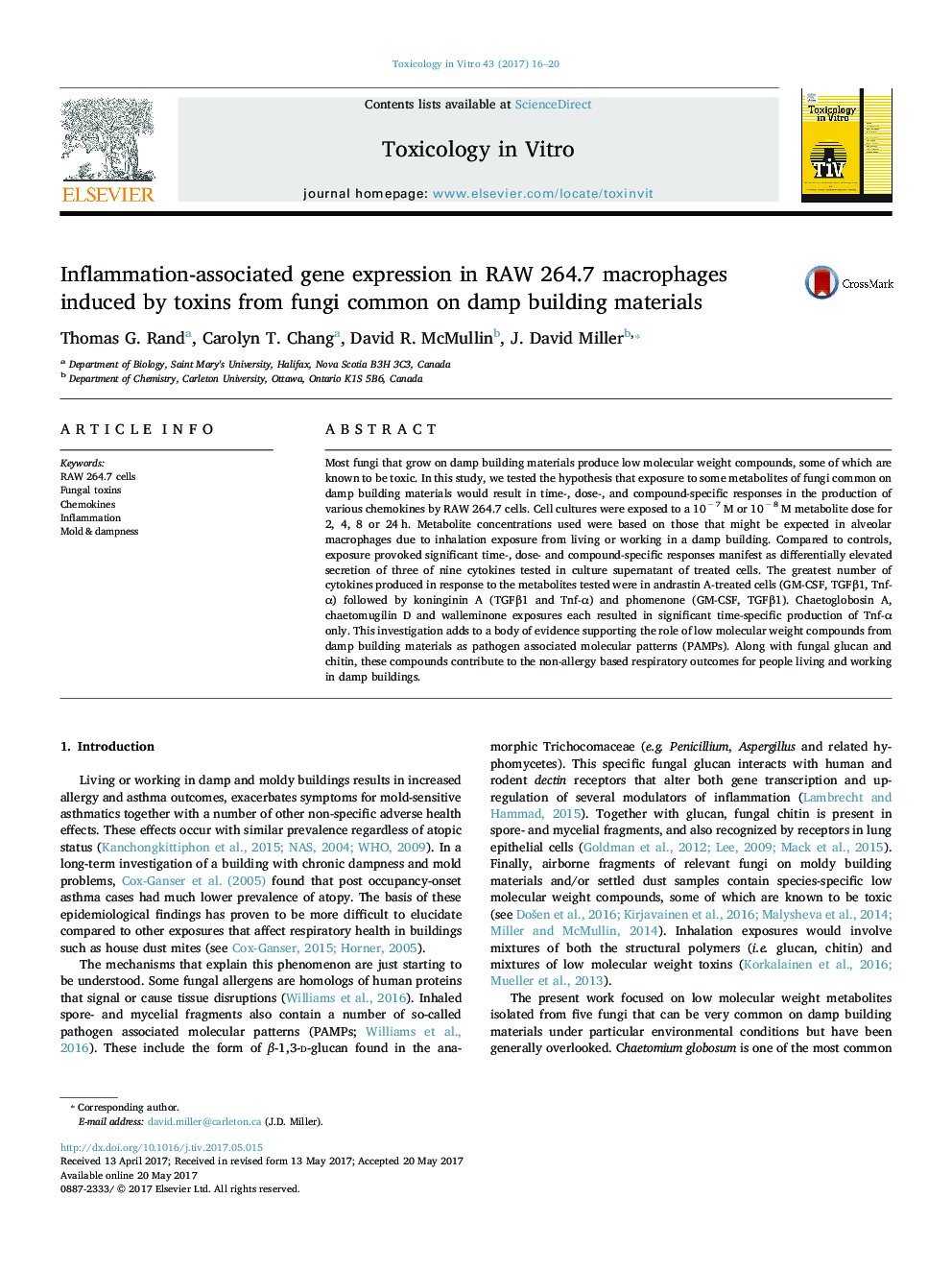| Article ID | Journal | Published Year | Pages | File Type |
|---|---|---|---|---|
| 5562575 | Toxicology in Vitro | 2017 | 5 Pages |
Abstract
Most fungi that grow on damp building materials produce low molecular weight compounds, some of which are known to be toxic. In this study, we tested the hypothesis that exposure to some metabolites of fungi common on damp building materials would result in time-, dose-, and compound-specific responses in the production of various chemokines by RAW 264.7 cells. Cell cultures were exposed to a 10â 7 M or 10â 8 M metabolite dose for 2, 4, 8 or 24 h. Metabolite concentrations used were based on those that might be expected in alveolar macrophages due to inhalation exposure from living or working in a damp building. Compared to controls, exposure provoked significant time-, dose- and compound-specific responses manifest as differentially elevated secretion of three of nine cytokines tested in culture supernatant of treated cells. The greatest number of cytokines produced in response to the metabolites tested were in andrastin A-treated cells (GM-CSF, TGFβ1, Tnf-α) followed by koninginin A (TGFβ1 and Tnf-α) and phomenone (GM-CSF, TGFβ1). Chaetoglobosin A, chaetomugilin D and walleminone exposures each resulted in significant time-specific production of Tnf-α only. This investigation adds to a body of evidence supporting the role of low molecular weight compounds from damp building materials as pathogen associated molecular patterns (PAMPs). Along with fungal glucan and chitin, these compounds contribute to the non-allergy based respiratory outcomes for people living and working in damp buildings.
Related Topics
Life Sciences
Environmental Science
Health, Toxicology and Mutagenesis
Authors
Thomas G. Rand, Carolyn T. Chang, David R. McMullin, J. David Miller,
